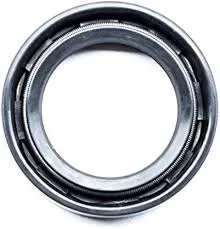10 月 . 16, 2024 03:48 Back to list
How to Replace Spark Plugs in Your Vehicle for Optimal Performance
Changing Spark Plugs in a Car A Comprehensive Guide
Maintaining your vehicle’s performance is crucial to ensure safety, efficiency, and longevity. One of the essential tasks in car maintenance is changing the spark plugs. Spark plugs are small yet vital components that ignite the air-fuel mixture in the engine’s cylinders, playing a pivotal role in your car's overall functionality. This article will guide you through the process of changing spark plugs in a car, ensuring you understand when to do it, how to do it, and the benefits of keeping them fresh.
When to Change Spark Plugs
Most vehicle manufacturers recommend changing spark plugs every 30,000 to 100,000 miles, depending on the type of plugs used and your vehicle's make and model. However, it's essential to refer to your owner’s manual for specific recommendations. Signs that your spark plugs may need replacing include difficulty starting the engine, poor acceleration, a rough idling engine, or a noticeable decrease in fuel efficiency. Additionally, dirty or worn-out plugs can lead to increased emissions, negatively impacting the environment.
Tools Required
Before diving into the process of replacing spark plugs, you will need some basic tools - A socket wrench set - A spark plug socket - A gap gauge (to check the gap between the electrodes) - Anti-seize lubricant (optional) - Torque wrench (for specific tightening requirements)
Steps to Change Spark Plugs
1. Gather Your Tools and Materials Make sure you have all the necessary tools within reach. It's crucial to work efficiently, and having everything prepared ensures a smooth process.
2. Locate the Spark Plugs Open the hood of your car and locate the spark plugs. Depending on your engine type (in-line, V-type, etc.), you may find them on top of the engine or along the sides.
3. Remove the Spark Plug Wires Carefully disconnect the spark plug wires. It's advisable to pull on the boot, not the wire itself, to avoid damaging the connection. If your vehicle has a coil-on-plug system, you will need to remove the coil pack first.
changing spark plugs in a car

4. Check the Gap of the New Spark Plugs Before installing the new spark plugs, use a gap gauge to check the gap between the electrodes on each plug. This measurement is crucial for optimal performance, and it often varies depending on the engine design.
5. Remove the Old Spark Plugs Using a spark plug socket attached to your ratchet, carefully unscrew and remove the old spark plugs. Be cautious of any debris that may fall into the cylinder when removing the plugs.
6. Install the New Spark Plugs Apply a small amount of anti-seize lubricant to the threads of the new spark plugs (if recommended) and thread them into the socket. Tighten them by hand until snug, then use a torque wrench to secure them to the manufacturer’s specifications. Over-tightening can damage the threads in the cylinder head.
7. Reconnect the Spark Plug Wires Once the new plugs are securely installed, reconnect the spark plug wires or coil packs. Ensure they are seated correctly to avoid any misfiring.
8. Test the Engine Start the engine to ensure a smooth operation. Listen for any irregular sounds and check for engine warning lights on the dashboard to confirm everything is working correctly.
Benefits of Changing Spark Plugs
Regularly changing your spark plugs can lead to numerous benefits, including improved engine performance, enhanced fuel efficiency, and reduced emissions. New spark plugs ensure a stronger ignition and a more complete burn of the air-fuel mixture, resulting in a cleaner-running engine. Additionally, preventive maintenance like spark plug replacement can save you from more severe engine problems and costly repairs down the line.
Conclusion
Changing spark plugs in a car is a straightforward task that can significantly impact your vehicle's performance. Understanding when and how to change them can save you time and money while keeping your car running smoothly. With the right tools and this guide, you can confidently tackle this essential maintenance task. Remember, a little effort goes a long way in ensuring your car remains in top condition for years to come.